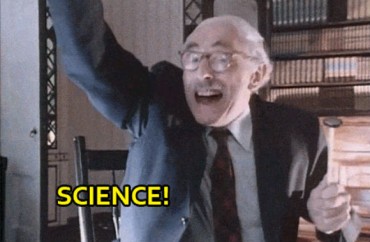
‘Think of it as a taco or a burrito’
Back in 2017, a philosopher and a mathematician wowed the peer reviewers for a social science journal with their scholarly argument for why penises are a “social construct.” It was a transparent hoax.
They intended to make the submission as incoherent as possible, at one point blaming the “conceptual penis” for environmentally destructive “manspreading,” yet it was enthusiastically accepted by Cogent Social Sciences. One reviewer praised it for capturing “the issue of hypermasculinity through a multi-dimensional and nonlinear process.”
The philosopher, Portland State University’s Peter Boghossian, told The College Fix at the time that the success of the hoax showed academics had “taught students to turn off their rational minds and become moral crusaders,” harming the legitimacy of the academy.
Over the next year, Boghossian and his partners would con another seven academic journals – more prestigious than Cogent – to accept “grievance studies” hoax papers on subjects ranging from rape culture in dog parks to a woke version of “Mein Kampf.”
Showing the increasing difficulty of parody, a major science journal has come around to the “social construct” argument of the penis.
First noted by evolutionary biologist Colin Wright, last week Scientific American published an essay by Rachel Gross, whose undergraduate degree is English literature and graduate degree is science journalism.
Her highest journalism positions appear to be editorial assistant for Slate and science editor for the Smithsonian’s website, but she has a book deal with W.W. Norton about “lady parts.” (Are you noticing a theme?)
MORE: ‘Conceptual penis’ authors say academe trades respectability for crusades
LEFT: A 2017 hoax paper by @ConceptualJames & @peterboghossian absurdly arguing that the penis is a social construct.https://t.co/T763Nt5mL5
RIGHT: A new Scientific American essay arguing that the penis is a social construct.https://t.co/eWM51KE2Ya
They're beyond parody. pic.twitter.com/IAjsk2c5oT
— Colin Wright (@SwipeWright) February 14, 2021
She claims that a “culture of phallus-worship has slanted the science” on male reproductive functions and denied vaginas their due as a subject of equally important study. Vaginas have extraordinary diversity in the animal kingdom, as Gross explains. (This argument would be better if the journalist didn’t litter her essay with bawdy puns.)
Yet her legitimate complaints about gaps in the study of sex organs leads to the article of faith at the core of her essay: that sex is not “either/or,” and science should bow to this recognition.
The penis and clitoris are actually “far more alike than different” because they are both “fleshy organ[s] lined with columns of spongy tissue, which can fill with blood and grow rigid,” according to Gross, whose specialty is English literature. “Think of it as a taco or a burrito: same ingredients, different configuration.”
She approvingly cites a “gender affirmation surgeon” (i.e., a quack) who has anatomically modified more than 2,000 men to look more like women:
What I’ve come to realize is that everything a man has a woman has; everything a woman has, a man has, anatomically. The penis is just a large clitoris. In fact, I don’t know why they don’t just call it a large clitoris.
Perhaps because an erect penis delivers sperm, and an erect clitoris doesn’t?
Because scientists have arguably been more interested in penises than vaginas, and “much of what we know about our nether regions has been shaped by lazy, antiquated stereotypes,” Gross claims that the “penis/clitoris” shows us “the full spectrum of gender and genitalia in all its glorious permutations.”
The only thing this argument shows is Scientific American‘s declining standards.
MORE: The story behind the ‘grievance studies’ project






Please join the conversation about our stories on Facebook, Twitter, Instagram, Reddit, MeWe, Rumble, Gab, Minds and Gettr.